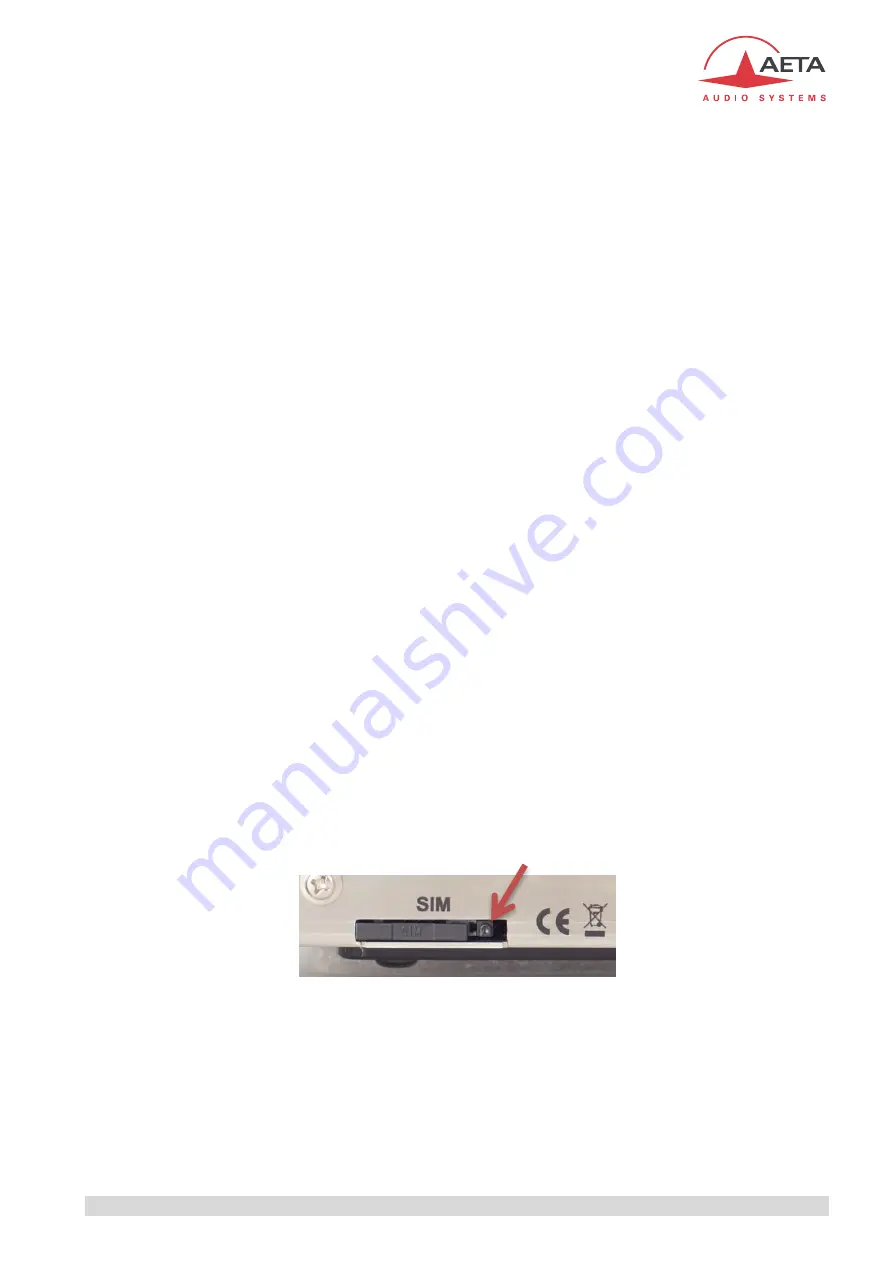
ScoopTeam - User manual - Draft 0002
29
The antennas must cover the band(s) used for the operator and network services. In doubt, refer to the
operator. The provided antennas cover bands 1, 2, 3, 7, 8, 20 (800 MHz, 900 MHz, 1800 MHz, 1900 MHz,
2100 MHz, 2600 MHz). They are compatible with almost all the 2G/3G/4G networks in Europe.
USB host sockets
[6]
These “host” sockets allows the connection of peripheral devices, such as a mobile access USB module
or “key” in order to access mobile IP transmission, or a Wi-Fi adapter key, etc.
Refer to chapter 2.3.3 about using a USB mobile access device.
ISDN socket
[7]
This RJ45 socket allows the connection to the ISDN. The wiring is for connecting an S0 (BRI) ISDN line
using a standard RJ45 cable.
USB device socket
[8]
This interface is a mini-B USB socket that allows the connection to a host computer. In such case the
ScoopTeam is linked as an audio interface. The host computer gets one audio input and one audio
output from this interface.
“GPIO” socket
[9]
This 9-pin female sub-D socket is the interface for the GPIO, as described in 2.5.5, GPIO.
Its wiring is described in:5.1.10 - GPIO interface.
Audio inputs/outputs
Line out
[10]
: male XLR socket.
Microphone/Line 4 input
[11]
: 3-pin female XLR, for commentary position 4.
Drawer for SIM card
[12]
This is only available when the unit is in “premium” version.
In the units fitted with the mobile network access option, this drawer houses the SIM card enabling the
access to the mobile network and services.
The SIM card must be inserted while the unit is off (or in standby).
To remove the drawer and the card, use a pen or a pencil and push the small button shown by the arrow
on the picture below:
To set the SIM card in place, first insert it in the cavity inside the drawer. Make sure to have the cut
corner on the right place, with the SIM chip visible. Then insert the whole assembly into the slot, with
the SIM card chip facing up. Check that the drawer is well in its guides before pushing it completely in
place.
If you have to use a smaller format µSIM card, you can use a SIM/µSIM adapter (available on request
from AETA): first set the µSIM inside this adapter, afterwards use this assembly like a regular SIM
card.






























